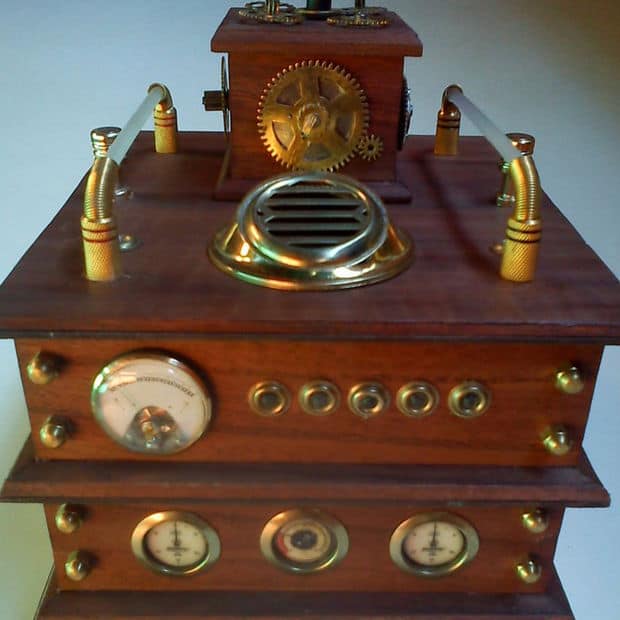
The Steampunk Phenomenon
Steampunk began as a fiction genre that imagines alternative histories in which technology never moves past the steam-driven industrialism of the Victorian Age. It portrays worlds ruled by retro-futuristic inventions, like heavy-geared automata and whirring Babbage-style mechanical computers.
It has since expanded into its own aesthetic, impacting both fashion and design, as well as a thriving community of makers who retrofit 21st century artifacts with the stained woods and brass knobs of the 19th century (c.f., the above picture of a steampunk modem).
One reason steampunk resonates is its intuitive physicality. Our modern world of plastic cases and digital chips is mysterious and sterile. A steampunk contraption, by contrast, is driven by pistons and valves that match our mental schema for how things function in the physical world.
This physicality is appealing (an idea fleshed out thoughtfully in Matthew Crawford’s wonderful manifesto: Shop Class as Soulcraft). Put simply, we’re attracted to things whose function we can concretely grasp.






